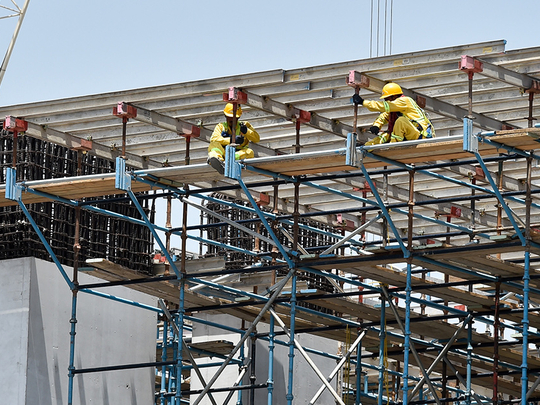
Abu Dhabi: Property developers as well as construction companies in the UAE are likely to continue facing challenges in the second half of this year as demand softens, with many developers having recorded a year-on-year drop in profits in the second quarter of 2016.
However, analysts are betting on continued strong performance from blue-chip companies – specifically Emaar and Aldar Properties, whose second-quarter profits rose 8 per cent and 9 per cent respectively.
The growth rate of both Emaar and Aldar, albeit higher than market expectations, is slower (almost a half) than what was seen in the second quarter of 2015 when year-on-year profit growth was in the double digits.
The slowdown in the second quarter of 2016 comes amid weaker investor appetite and lower demand on the back of falling oil prices and slower economic growth.
“We expect Emaar and Aldar to maintain the profit growth they saw in the first six months; we don’t expect to see surprises. In the current situation, if that happens, I think it’s an achievement because we see a lot of pressure on the real estate sector be it in rental or sales. For the other [developers], I hope we don’t see any negative surprises because I think they’re not as diversified and they’re weaker if markets slow down more than they did in the first half,” said Mohammad Yasin, managing director of National Bank of Abu Dhabi Securities.
Other heavily-traded developers in the UAE include Damac Properties and Deyaar Developments, whose second quarter net profit fell year-on-year 37 per cent and 18 per cent respectively.
And challenges for the UAE’s developers have trickled down to the construction sector, where companies are reporting delayed payment cycles and lower profit margins. Arabtec Holding, for example, one the largest contractors, just recorded its seventh consecutive quarter of losses.
Its second-quarter loss reached Dh186.4 million, but is a 74 per cent improvement from the Dh718 million in losses recorded in the same quarter of 2015. While the company’s chairman said earlier this year the company is aiming to breakeven this year, analysts questioned whether it will be able to especially considering that the second quarter loss is three times higher than market expectations.
Meanwhile, Abu Dhabi-listed Eshraq Properties recorded a loss of Dh3.5 million in the second quarter, while Manazel Real Estate saw a 30 per cent decline in first-half profits.
“In terms of effect and in terms of market [capitalization], Emaar and Aldar will continue to have the biggest effect. UPP [Union Properties] is weak in terms of market cap, and Manazel’s effect is small. Damac’s effect is substantial – it’s one of the top companies on the DFM – so it will have an effect but I think knowing how aggressive the management is, they will be able to defend the current level of profits, and I don’t see bigger drops going forward,” Yasin said.
In Dubai, analysts are taking a cautious, wait-and-see approach on the property market, with some speculating that the market is close to bottoming out and others expecting more softening.
In Abu Dhabi, however, reports suggest the property market is starting to show early signs of decline after 18 relatively stable months, with property consultancy JLL saying the market may see a downward trend soon.
Tariq Qaqish, managing director of asset management at Al Mal Capital in Dubai, said that the strength in the US dollar (to which the UAE dirham is pegged) over the past 12 months and the drop in oil prices will continue to add pressure on the property market, and hence, developers.
“I think developers like Emaar and Damac can definitely overcome the challenges as they did in 2008. Aldar at the time had to get some help from the government, but they can [overcome hurdles] for one reason — cash flow.
I think there are lots of factors that will impact performance over the rest of the year; the interest rates are definitely a key factor that they should be watching, so cost of funding is one, as well as real estate prices. You’re also seeing a slowdown in the macro picture…so if we see more negative flow in population, we’ll see higher supply versus demand, therefore lower rents and prices,” Qaqish said.











